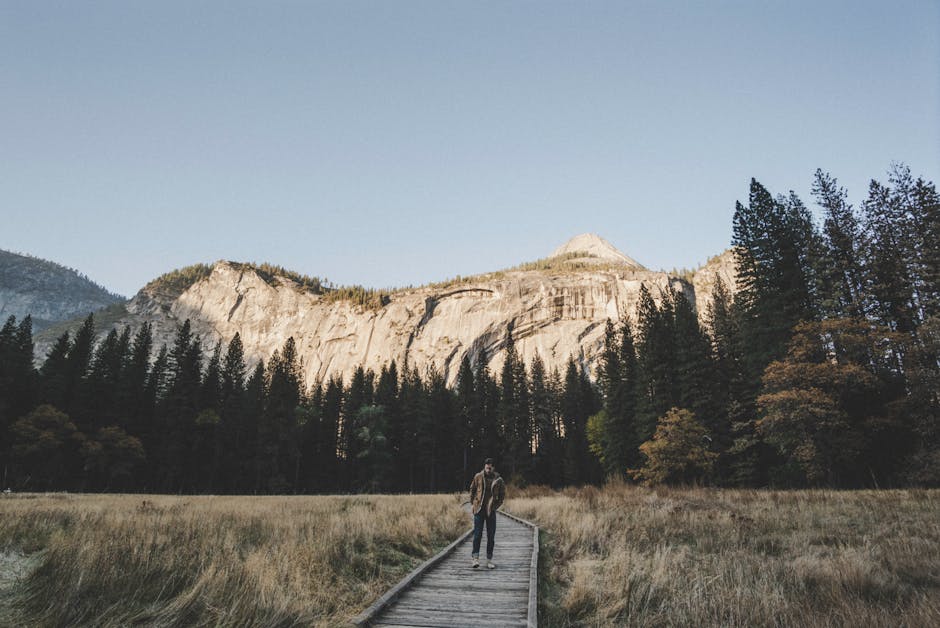Master Half Dome Cables: Your Ultimate 2025 Summit Ascent Guide
There are few places on Earth that command respect and awe quite like Yosemite National Park. And within that majestic landscape, one particular challenge stands tall, literally and figuratively: Half Dome. Having tackled this incredible ascent myself, enduring the pre-dawn start, the relentless switchbacks, and that final, unforgettable climb up the iconic half dome cables, I can tell you it&s an experience that transcends a mere hike. It’s a journey of grit, determination, and unparalleled reward. This isn&t just about reaching a summit; it&s about pushing your limits and discovering what lies beyond.
If you&re dreaming of conquering Half Dome, you&re in the right place. Let&s dive deep into what it takes to prepare for, undertake, and safely enjoy one of the most exhilarating adventures in the Sierra Nevada.
What Makes the half dome cables So Iconic and Challenging?
The half dome cables are famous for their unique, exhilarating ascent up a steep granite face, marking the final, most challenging section of the Half Dome hike.
Imagine standing at the base of a massive, smooth granite dome, looking up at two steel cables anchored into the rock, stretching some 400 feet up an incline that reaches an astounding 45 to 60 degrees. This is the fabled cable section of Half Dome. It&s not technical rock climbing, but it&s far from a walk in the park.
Hikers ascend by pulling themselves up, hand over hand, using wooden planks placed every 10-12 feet to rest and regain footing. The exposure is immense, the views are breathtaking, and the sense of accomplishment upon reaching the summit is truly indescribable. It&s a test of strength, nerve, and focus, and it&s what makes the Half Dome experience so legendary within yosemite national park.
How Do You Secure a Half Dome Permit, and Why Is It So Crucial?
A Half Dome permit is mandatory for all hikers attempting the cable section, managed via a lottery system to limit daily numbers and ensure safety.
Due to the immense popularity and the inherent safety concerns of the cable section, the National Park Service (NPS) strictly limits the number of hikers allowed on the cables each day. This means a permit is not just recommended; it’s absolutely essential. Without one, you will be turned back.
The NPS operates two main lottery systems: a pre-season lottery in March for the entire hiking season (typically late May to mid-October, depending on conditions) and daily lotteries during the hiking season. For the daily lottery, you apply two days in advance of your desired hiking date. Competition is fierce, so planning ahead and being flexible with your dates are key strategies.
Always check the official Yosemite National Park Half Dome permits page for the most up-to-date information and application windows. Successfully securing a permit is often the first major hurdle in your Half Dome adventure.
What Essential Climbing Gear and Safety Tips Are Non-Negotiable for the Cables?
Essential climbing gear includes sturdy gloves and appropriate footwear, while strict adherence to hiking safety protocols, especially regarding weather and hydration, is paramount.
Preparation is everything when it comes to the half dome cables. Here’s a non-negotiable checklist:
- Gloves: This is perhaps the most crucial item for the cables. You’ll be gripping steel cables for hundreds of feet. Durable work gloves or climbing gloves are ideal. Many hikers swear by well-fitting gardening gloves or even Mechanix Wear gloves for their grip and protection.
- Footwear: Invest in sturdy, broken-in hiking boots with excellent ankle support and reliable traction. The granite can be slippery, especially if wet. Brands like Salomon, Merrell, or Vasque offer great options.
- Hydration: Carry ample water – at least 3-4 liters per person. A hydration bladder in your pack makes drinking on the go easier. Water sources are limited after Little Yosemite Valley.
- Food & Snacks: High-energy snacks (nuts, dried fruit, energy bars) are vital for this long, strenuous journey.
- Headlamp: Even if you plan to be back before dark, a headlamp with extra batteries is a non-negotiable safety item. Unexpected delays can happen.
- First-Aid Kit: Blisters, scrapes, and minor injuries are common. A basic first-aid kit is essential.
- Rain Gear: Weather in the mountains can change rapidly. A lightweight, waterproof jacket is a must.
- Sun Protection: Hat, sunglasses, and sunscreen are crucial, as much of the trail is exposed.
Beyond gear, remember these safety principles:
- Weather Watch: Never attempt the cables if there’s a threat of rain, lightning, or strong winds. Wet granite is extremely dangerous.
- Pace Yourself: The full Half Dome hike is a marathon, not a sprint. Conserve energy for the cables.
- Yield to Descenders: Those coming down the cables have the right of way.
- Stay Hydrated & Fueled: Don&t wait until you&re thirsty or hungry.
- Know Your Limits: There’s no shame in turning back if you’re not feeling up to it. The mountain will always be there.
Beyond the Cables: What Else Should You Know About the Half Dome Hike?
The Half Dome hike is a strenuous, all-day endeavor covering significant mileage and elevation gain, requiring excellent physical conditioning even before reaching the cables.
The cable section is just the thrilling finale. The entire Half Dome round trip is a grueling 14-16 miles with over 4,800 feet of elevation gain, typically taking 10-12 hours. Most hikers start pre-dawn from Yosemite Valley.
The journey often begins via the iconic Mist Trail, offering stunning views of Vernal and Nevada Falls, before joining the John Muir Trail. You&ll pass through Little Yosemite Valley, a popular backpacking spot, before beginning the final ascent to the subdome and then the cables. The sheer scale of the granite dome itself is impressive, and the views from the summit, overlooking Yosemite Valley and the vast Wilderness, are unparalleled.
Physical preparation, including regular cardio and strength training, is crucial. For more on preparing for long day hikes in Yosemite, check out our Ultimate Guide to Yosemite Day Hikes.
Shop Related Products on eBay
Find the best deals on these recommended products:
… (Content truncated for length) …
About the Author:
Poly Kaza is a seasoned technology journalist and wearable tech enthusiast with over a decade of experience reviewing and analyzing the latest innovations in smart devices. He has a deep understanding of the underlying technologies that power smartwatches and a passion for helping consumers make informed decisions about their digital companions. His work focuses on bridging the gap between complex technical specifications and practical user experience, with a keen eye on how wearables impact daily life and health.













Post Comment